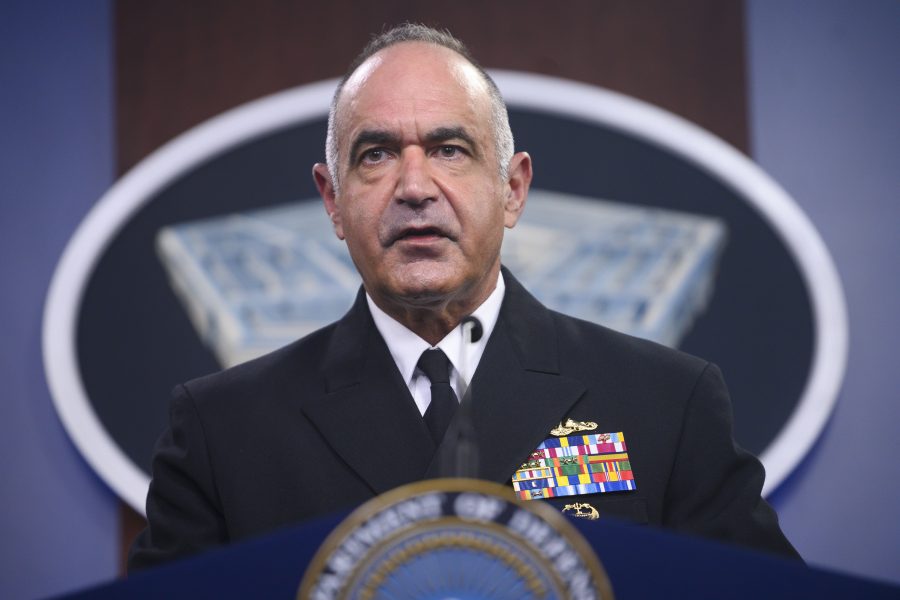If strategic deterrence fails, nothing else will work as intended, U.S. Strategic Command boss Adm. Charles “Chas” A. Richard said during a virtual Brookings Institution event May 7.
“Every operational plan in the Department of Defense, and every other capability we have in DOD, rests on the assumption that strategic deterrence, and in particular nuclear deterrence, … is holding right,” Richard said. “And, if that assumption is not met, particularly with nuclear deterrence, nothing else in the Department of Defense is going to work the way it was designed.”
The United States can no longer separate nuclear and conventional policies, assuming they address separate threats. “You can’t think about it in pieces,” he said. “Nuclear is not separate from conventional; it is not separate from space; [it] is not separate from cyber. They are all linked.”
Last year, Richard said his command was rethinking how it approaches strategic deterrence in light of today’s threats, and Lt. Gen. Richard M. Clark, the Air Force’s deputy chief of staff for strategic deterrence and nuclear integration, said the Air Force was working on a new nuclear and conventional integration policy. China is rapidly building up its nuclear arsenal and has an “ambiguous no-first-use policy,” and Russia is bolstering its so-called tactical nuclear weapons, Clark said.
“The multipolar world is presenting different challenges for us,” Clark said at an Aug. 19 Mitchell Institute for Aerospace Studies event. “The lines are a bit more blurred between conventional and nuclear, so that’s driven us to start thinking in ways that may be different than we thought about in the last 20 years or so.”
Richard reiterated comments he made on Capitol Hill in April, saying the nation does not have a triad on a day-to-day basis because nuclear-capable bombers were taken off alert after the Cold War. However, he told members of the Senate Armed Services Committee that could change if the decision was made to shift to a dyad approach to deterrence.
He emphasized the rapidly expanding threats, noting that for the first time in history, the United States must deter two peer, nuclear-capable adversaries simultaneously.
“That is a very different stack of dynamics, particularly the fact they have to be deterred differently. We’re working very hard on that here, but I think this is a much broader question that invites serious effort to go think through,” Richard said.
However, the United States has repeatedly delayed nuclear modernization and is now facing a multibillion-dollar bill for new bombers, a replacement for the 70-year-old Minuteman III intercontinental ballistic missile system, updated nuclear command and control capability, new ballistic missile submarines, and more. The Biden administration has said it wants to take a fresh look at the country’s nuclear capabilities and plans a new Nuclear Posture Review, while some on Capitol Hill are pushing to either eliminate the ICBM leg of the triad altogether or push off modernization yet again.
Richard says this is a mistake and cautioned that the U.S. has only one chance to get this right.
“We have delayed the recapitalization of the triad to the point that in certain infrastructure areas and in certain talent areas—human capital—that if we’re wrong, and choose not to do something, we lose [those capabilities], and we’re not getting them back for five or 10 years,” Richard said. “We don’t normally face those decisions, but I am very confident that we’re trying hard to identify them. I’m confident our leaders, both inside the department and inside the nation, will make wise decisions, but we don’t normally have that consequence to our decisions.”

